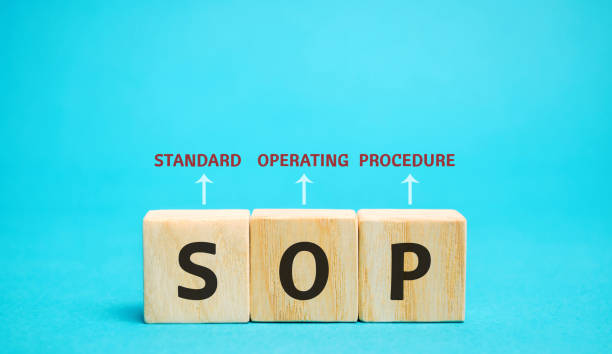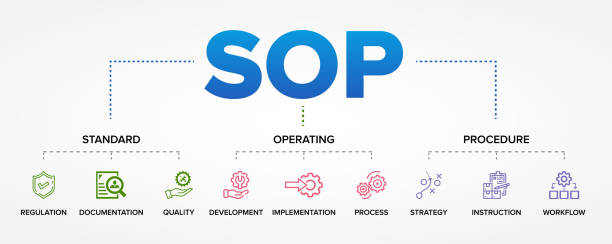
Articles
How to Write SOP Document: A Guide for SMBs

Do you own a small-medium-sized looking for ways to grow and scale your business while providing superior onboarding, offboarding, and training experiences? One way that can help is to Write Standard Operating Procedures (SOP) documents. But how to write SOP document effectively?
In this blog post, we'll explore the importance of writing SOPs as well as tips on how to craft engaging ones. To ensure ongoing success, we will provide guidance on how to keep SOPs current.
What is a Standard Operating Procedures (SOP) Document?
An SOP document is a comprehensive list of directions that provide guidance on how to carry out particular activities. Knowing how to write SOP document is an essential tool for businesses of any size, as it helps ensure consistency in operations and ensures employees understand what is expected of them. Having SOP documentation can also help streamline processes, increase efficiency, reduce errors, and make sure everyone is on the same page.

There are several types of SOP documents including process-specific procedures, safety protocols, and training materials. Process-specific procedures provide step-by-step instructions for completing a task or activity such as customer onboarding or invoice processing.
Safety protocols detail the necessary steps to be taken in order to keep employees safe while performing their duties such as proper handling techniques for hazardous materials or machine maintenance guidelines. Training materials outline the knowledge needed by new hires so they can quickly become productive members of your team such as product information or company policies.
When writing an effective SOP document, it’s important to identify its purpose and scope first before outlining each step in detail with relevant details and resources included when applicable. The language should be clear and concise yet comprehensive enough so readers will have no difficulty understanding what needs to be done; visuals like flowcharts may also help enhance understanding further. Examples should be incorporated whenever possible along with real-life scenarios related to the topic at hand — this will make your content more engaging for readers which could result in better retention rates later on down the line.
Finally, once you have created your SOP documents it is important to maintain them regularly. Establish a system for updating them over time and ensure accessibility across all departments within your organization so everyone has access when needed - especially during employee onboarding sessions.
Additionally, create a plan for training new hires on procedures outlined within these documents and monitor compliance with policies & regulations mentioned therein. By doing this, you can ensure that all staff is aware of the current protocols and regulations.
An SOP document is a set of step-by-step instructions that outlines the processes and procedures for completing tasks within an organization. It helps to ensure consistency, efficiency, and accuracy in operations. Careful planning, attention to detail, and frequent review/revision are essential in how to write SOP document effectively.
How to Write SOP Document effectively?
Creating an effective SOP is essential to maintain a well-functioning business, and its purpose and scope should be identified in order to ensure it contains all necessary information and can be accessed by the right people. Identifying the objectives and range of an SOP is essential for constructing a successful one. This will help you outline what needs to be included in the document and who should have access to it.
When outlining, utilize explicit language that is comprehensible to all personnel. It's also helpful to incorporate visuals such as flowcharts or diagrams so readers can quickly grasp how each step fits into the overall process. Additionally, make sure all necessary details such as deadlines, resources needed, etc., are written in a step-by-step SOP format so there are no gaps in understanding for employees.
Once you've written out all of your step-by-step instructions, review them thoroughly before finalizing your SOP document. Make sure everything is up-to-date with any recent changes or updates and look for ways to improve clarity if needed — after all, "a stitch in time saves nine". Finally, revise any outdated information or processes that may no longer apply so employees aren't confused about which procedures they should follow.
By utilizing these guidelines on how to write SOP document effectively, you can generate a comprehensive manual that delineates precisely how tasks should be executed within your company, facilitating unified comprehension of management's stipulations and standards, thereby increasing operational effectiveness. This ensures that everyone is on the same page with expectations and standards set forth by management, thus leading to improved operational efficiency.
Purpose, scope, details, and resources should all be carefully considered in how to write SOP document effectively. With the right tips in hand, you can create a comprehensive yet engaging SOP document that is both informative and easy to understand.
Tips for Writing an Engaging SOP Document?
Constructing a compelling SOP can be an intimidating endeavor, yet it is critical for making sure that all personnel within the company abide by the same protocols. To make sure your SOPs are effective, you should use clear language and formatting, keep them short and simple yet comprehensive, incorporate visuals to enhance understanding, and include relevant examples or scenarios.
When writing an SOP document, use concise language that is easy to understand. Use plain English whenever possible; avoid jargon or technical terms unless they are absolutely necessary.
Include headings and subheadings, as well as bullet points when appropriate, to ensure a readable format. This will help ensure that readers don’t get overwhelmed by long blocks of text.

It is also important to keep your SOP documents short and simple while still providing enough information so employees know what their responsibilities are. Try not to go into too much detail about each step; instead, focus on the main tasks needed for the completion of the process being described in the document. Visuals such as flowcharts or diagrams can also be used to break up long sections of text and provide additional clarity around how tasks should be completed within a given process.
Finally, including relevant examples or scenarios related to specific steps within a procedure can help bring more life into an otherwise dry subject matter while helping readers better understand what they need to do in order for things to run smoothly throughout their organization. By incorporating these tips into your SOP documents you can create engaging content that helps ensure compliance with policies while making sure everyone understands exactly what needs to be done at all times.
Writing an engaging SOP document requires clarity and conciseness to ensure employees understand the procedures. To maintain these documents, it is important to establish a system for regular updates as well as create a plan for training new hires on policies and procedures.
Best Practices for Maintaining Your SOP Documents?
Having an effective system for maintaining your Standard Operating Procedure (SOP) documents is essential to the success of any business. It is critical to maintain an up-to-date SOP system in order for employees to understand their duties, execute tasks correctly and ensure the success of any business. To ensure efficient operation, regularly review and update SOPs to reflect current standards.
Establish a System for Updating Documents Regularly: A key part of successful SOP maintenance is regularly reviewing and updating them when necessary. This should be done on a regular basis — at least once every quarter or whenever changes occur in the organization’s structure, operations, or processes. To make this process easier, create a calendar reminder so you don't forget.
Ensure Accessibility to All Employees
Having easy access to current SOP documents is critical; if they can't find it, they won't use it. Store SOP documents in an online repository such as Google Drive or Dropbox to guarantee that all employees have access to the most up-to-date version. Additionally, consider providing hard copies in common areas like break rooms or reception desks where everyone can quickly grab one if needed.
Create a Plan for Training New Employees on Procedures: When onboarding new hires, it's important that they understand company policies and procedures from day one. Developing an effective training plan will ensure that new employees learn everything they need to know about proper protocol before beginning work — which will help prevent costly mistakes down the line. Consider utilizing existing SOP documents as reference materials during training sessions too.
Once established systems are in place, management should monitor employee compliance with these protocols on an ongoing basis — especially when introducing new policies/procedures into the mix. This can be done through surveys or questionnaires sent out periodically throughout the year asking staff members how comfortable they feel following specific procedures and guidelines. Feedback from these responses can then be used to make adjustments accordingly if needed.
FAQs in Relation to How to Write SOP Document
How do you write an SOP document?
A Standard Operating Procedure document is a comprehensive guide that outlines the precise steps and processes required to accomplish specific objectives. It should include detailed instructions, diagrams or pictures if necessary, and any relevant safety information. The verbiage should be precise and succinct, with a focus on exactness.
In learning how to write an SOP document, it's important to consider who will use them; it should be written in such a way as to ensure understanding by all users regardless of their experience level.
How do you effectively write SOPs?
Constructing successful SOPs necessitates concise and understandable directions. Start by identifying the purpose of the procedure, then break down each step into logical tasks that can be easily understood.
Use plain language and an active voice to avoid confusion or misinterpretation. Include all relevant details such as safety precautions, tools required, expected results, etc., but keep it brief so readers don’t become overwhelmed with too much information at once. Lastly, review your SOP regularly to ensure accuracy and relevancy in order to maximize efficiency within your organization.
What are the three things to remember when writing SOP?
First, ensure that each procedure has a purpose and is written in a uniform manner for organizational consistency. Next, establish consistent formatting for all procedures: Use an easy-to-follow template to ensure that all processes are written in a consistent manner across your organization. Lastly, regularly test existing procedures to identify areas where they can be improved or updated; then make sure those changes are communicated effectively throughout the organization.
Conclusion
Knowing how to write SOP document is essential for any business looking to scale and grow. By utilizing the advice provided in this article, you can ensure that your SOP documents are well-structured, maintained, and up-to-date with industry standards to enable efficient operations and provide clear direction for all personnel. Ultimately, writing a good SOP document will help your organization run more efficiently while providing clear guidance on processes and policies to all employees.
Sign up now for a free 7-day trial with Trainual and scale your business!
Similar Blog Posts







